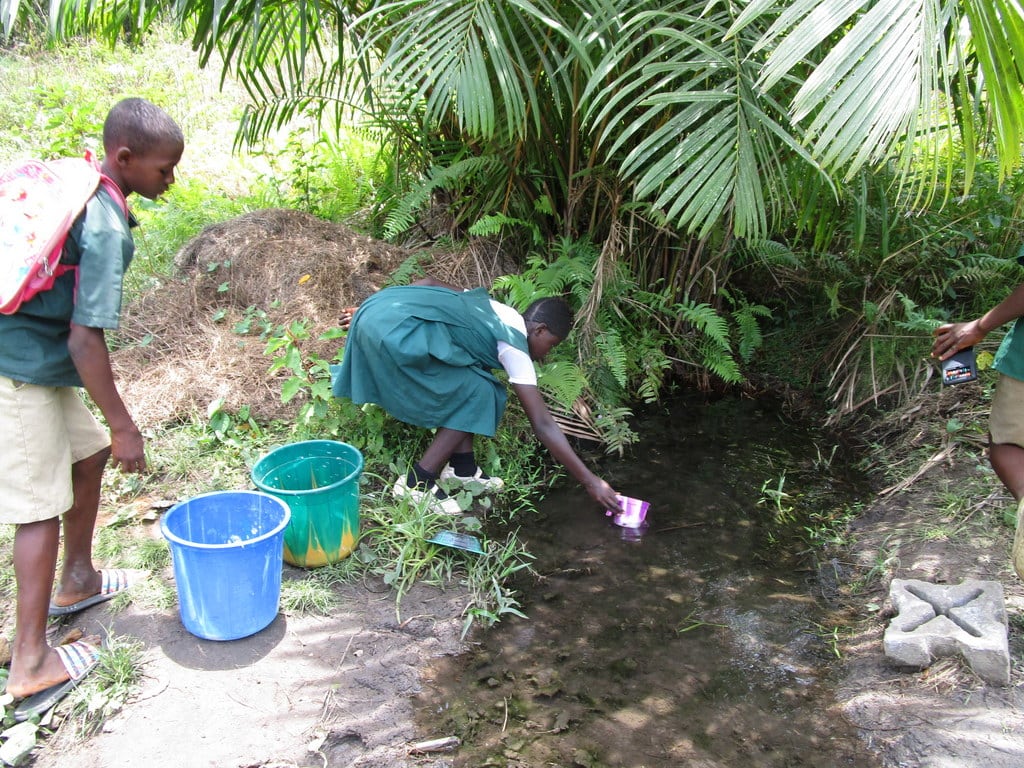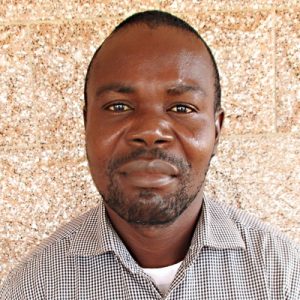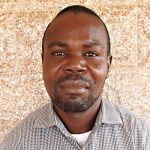Komrabai Community has three protected wells that are in great environments. Unfortunately, only one of these three wells is functioning, and only partially.
It is located at DEC Komrabai Primary School.
The one at the school is producing a low quantity of water and almost dries up entirely for parts of the year. This is common for most hand-dug wells in Sierra Leone because the water table is deep, and private contractors cannot dig deep enough to ensure a well can serve the people for 365 days.
In addition to this well, we are rehabilitating the other two non-functioning wells to ensure everyone in Kombrabai has access to safe drinking water. See the projects here and here.
That means that this community’s only reliable water source is the swamp, which is located more than a mile away from some homes. Aside from the distance, the road is in poor condition and hilly. It discourages people from using the source.

The community people use this source for more than one purpose. They will use it to bathe, farm, launder and some of them, particularly the kids, will even defecate close to the source.
The swamp water is open and not controlled, so it is prone to various contaminants. Because they share this unprotected source with other wild animals, people are exposed to the diseases of those animals.
In the morning, school children are the first to visit this source. The community people have to wait until the kids are done, by which time the whole source becomes dirty. During weekends, the kids flock to this water point for their weekly laundry and this limits the chances of other people accessing water.
The community members must wait for the water to settle before collecting it. We learned that some people in this village do filter their water before consuming it. But Most will let the water stand in containers and wait for it to settle before draining it into their drinking buckets.
People risk waterborne diseases every time they drink this dirty water. And when people get sick, they are not productive and cannot earn as much money to care for their families. People die needlessly from these waterborne illnesses like cholera, dysentery, diarrhea, and malaria.
This is a very rural community. It is mostly peaceful. People with some basic education have chosen to be traders, going to one-day markets called Lumas to buy agricultural produce wholesale to retail it in nearby villages. Others with no academic background have chosen to farm.
The school was founded in 1965 and has grown from 50 students to 471 students over the past half-century thanks to support from the community and government.
The school compound has two functioning latrines and one decommissioned one that needs some repairs. We've had conversations with the school and they say that they are thinking about rehabilitating the decommissioned latrines.
The two functioning latrines have four rooms each, for boys and girls respectively. The structure is standard but the floor is dirty and the holes are also dirty and open due to the water shortage. Even the boys' latrine environment is not clean and the doors are left wide open.
What we can do:
Training
There will be hygiene and sanitation training sessions offered for three days in a row.
The hygiene and sanitation trainer decided it would be best to teach students, staff, and community members about the importance of handwashing, building and using dish racks, and other sanitation facilities. Pictures will be used to teach the community how to discern between healthy and unhealthy hygiene and sanitation practices.
These trainings will also result in a water user committee that manages and maintains the new well. They will enforce proper behavior and report to us whenever they need our help solving a serious problem, like a pump breakdown.
Well Rehabilitation
We want to work on the well located at the school. Most of these wells were dug by local contractors who may not have had the energy to dig further down. As a result, these wells often dry up not long after their construction. So what we have been doing is converting these wells to boreholes so that a reasonable water level can be reached. This is proving to be the best intervention for these communities.
Our team has decided to do the hard work of drilling a borehole by hand in the bottom of this well, which will not only increase the water quantity but will ensure its quality, too. A new well pad will keep contaminants out, and a new India MkII stainless steel pump will provide easy and safe access to the clean water inside.
This community has been drinking dirty swamp water and suffering the consequences. With our rehabilitating this open well, the students and the surrounding community will be provided with plenty of safe, clean drinking water.

 Protected Dug Well
Protected Dug Well
































